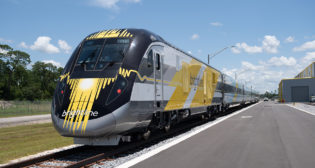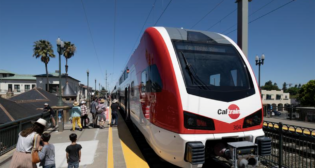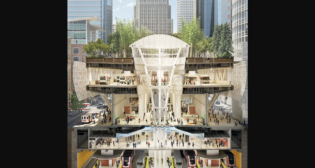
Guest Editorial: High speed on the NEC, an engineer’s perspective
Written by William C. Vantuono, Editor-in-ChiefEDITOR’S NOTE: Joseph McMahon retired from Amtrak after 51 years of service as a locomotive engineer, beginning with the New York, New Haven & Hartford Railroad in 1963 and concluding with Amtrak in 2014. His area of expertise is the Northeast Corridor between Boston and New York City. McMahon operated trains in all classes of service—freight, commuter/regional and higher-speed Acela Express.
True high-speed train travel is not feasible on the Northeast Corridor. Congress recently approved a $2.45 billion loan package for Amtrak, of which a good portion will be spent on 28 Generation 2 high-speed trainsets.
Generation 1 (Acela Express) high-speed trainsets only accomplished a fraction of what they were touted to do. There is no reason to expect Generation 2 to be any different, the reasoning being that you can only travel so fast on the existing roadbed, no matter the tilt technology. Generation 1 trainsets were equipped with the latest tilt system, yet could only equal, not exceed, the running time of the 1969 Metroliners between New York and Washington D.C.
The present roadbed with minor deviations dates back to the 1800s, taking a circuitous route to service large population centers and various industries. To attain a true-high speed system on the Northeast Corridor, there must be dedicated and exclusive infrastructure built as straight as the geography will allow. The cost and environmental impact of such an undertaking would be astronomical, given the real estate values in that portion of the country.
Attempts at higher speeds date as far back as the 1950s, when the New Haven purchased Talgo trains, and the 1960s, when United Aircraft unveiled its state-of-the art Turbo Train. Both eventually went the way of all “trains of the future” since World War II, to the scrap heap. Integrated trainsets such as the Acela Express (and the aforementioned “trains of the future”) have proven impractical. Should a car in an Acela Express consist become defective, the entire trainset must be removed from service, resulting in a massive delay to travelers. A defective car in an Amfleet consist can be removed, resulting in a short delay and continuation of the journey.
Amtrak force fed the Acela Express to the traveling public, trumpeting its airplane-style decor, desktop seating replete with USB ports, WiFi, receptacles for recharging sundry electronic devices—all masking the facts that, for the extra cost, it did not arrive at its destination much sooner than Regional trains, and that the time difference was due mainly to the Acela Express making fewer stops than Regional trains. Amtrak’s now-retired AEM7 locomotives with Amfleet coaches and an experienced engineer, were they allowed, could equal Acela Express running times, as did the Metroliners of 1969.
The demise of the Supersonic Transport—touted as an engineering marvel that would revolutionize airplane travel but turned out to be a business bust due to high maintenance costs, environmental impact and declining ridership—gives credence to the notion that the traveling public is not in that much of a hurry.
Comparisons to European and Japanese railway systems cannot be made. Europe and Japan were bombed into rubble during World War II. With nothing in the way, the Marshall Plan and SCAP (Supreme Commander for the Allied Powers), with an eye on the future, rebuilt the European and Japanese railway systems as straight and modern as practicable.
The pluses of conventional train travel far outweigh the expense, upheaval and environmental impact that construction of a dedicated roadbed would have on the crowded Northeast Corridor. The hassle and expense of airline travel coupled with an outdated Interstate highway system should place the 500-mile and under mode of travel squarely in Amtrak’s lap. If the bulk of the $2.45 billion loan were used to upgrade the present fleet with all the bells and whistles (USB ports, WiFi, desktop seats, etc.), the Acela Expresswould soon be forgotten.
Americans are not in that much of a hurry. Frequent, dependable, timely train travel should supersede enormous outlays of taxpayer dollars that produce minimal improvements.



